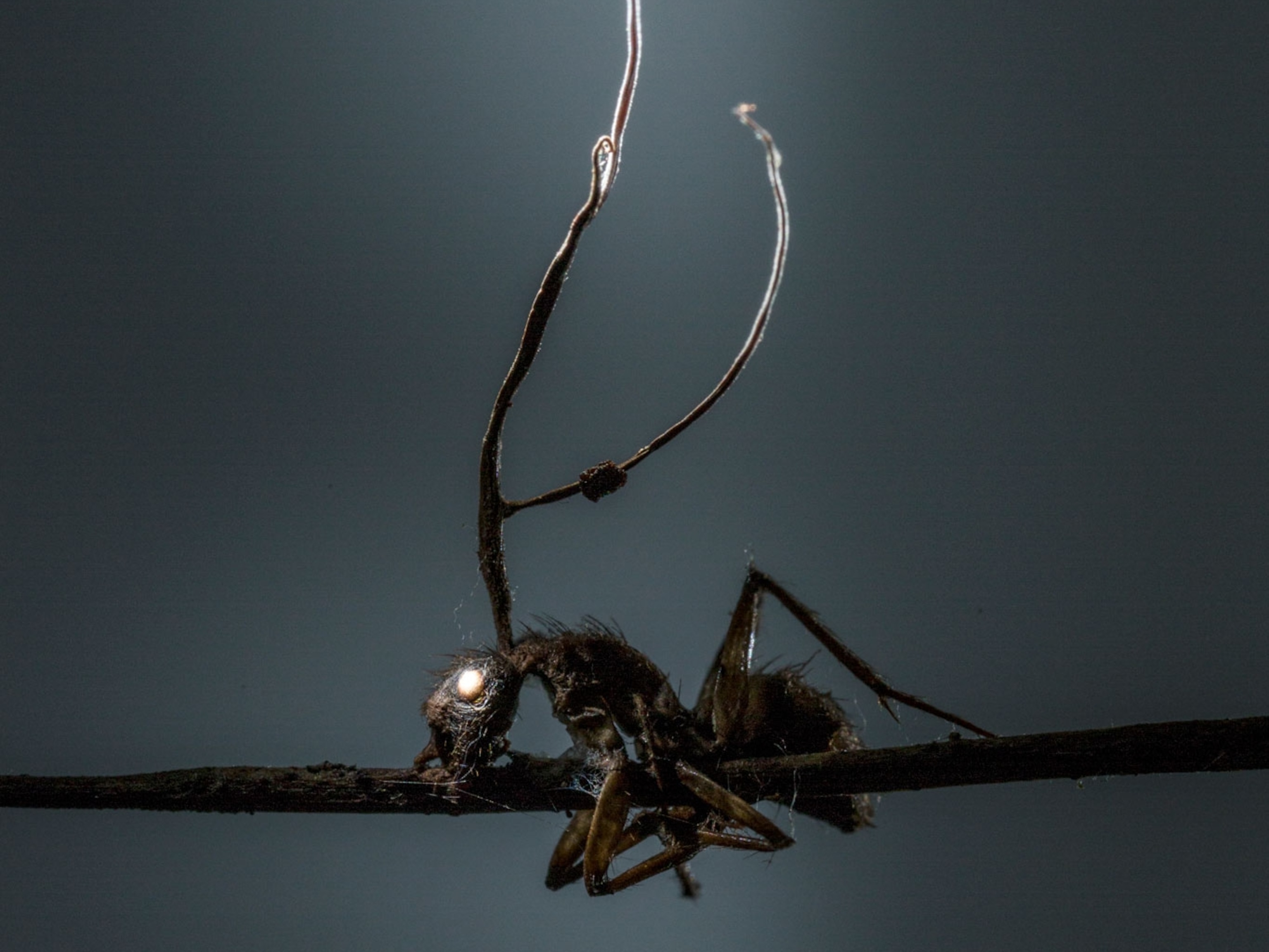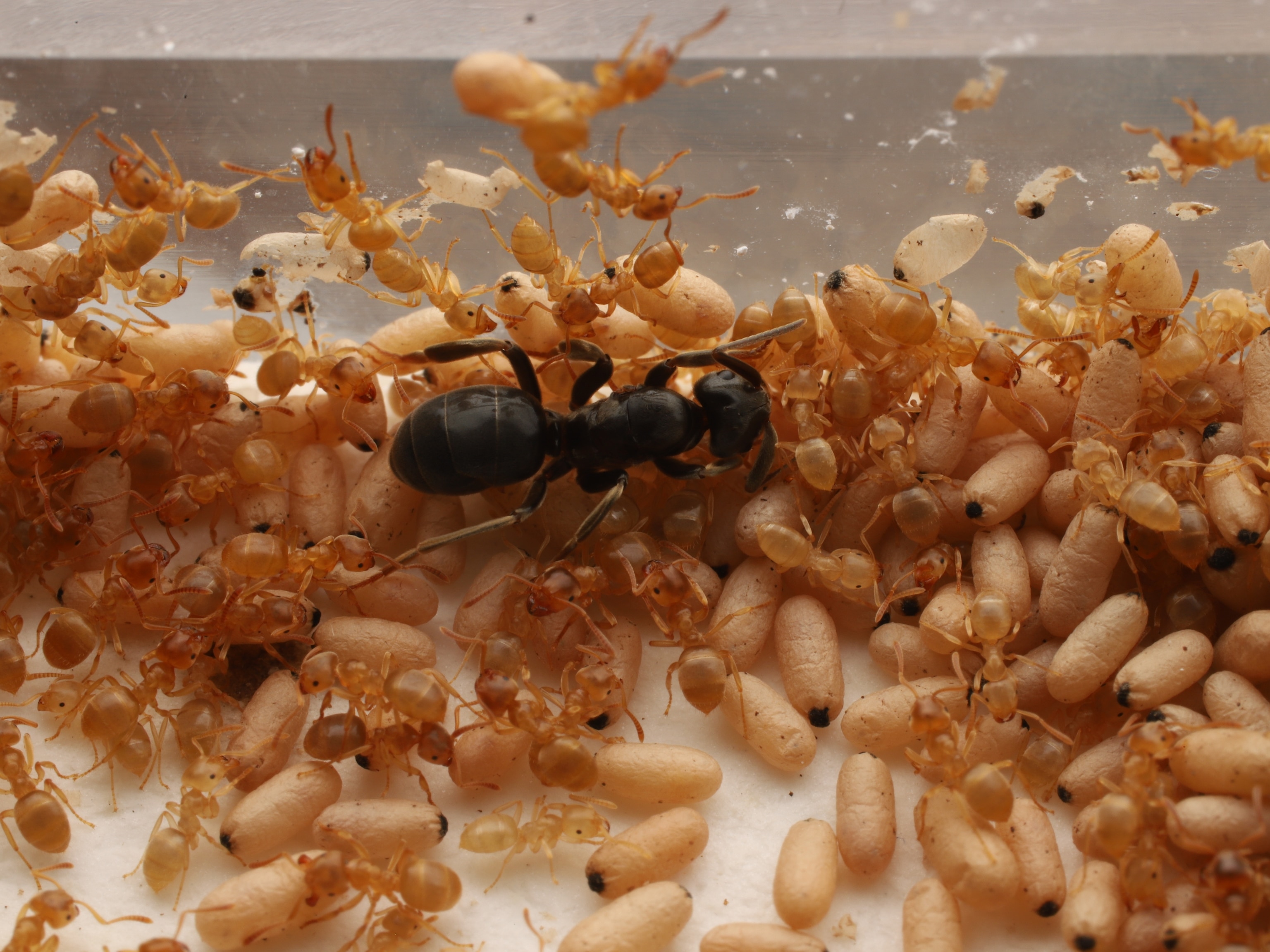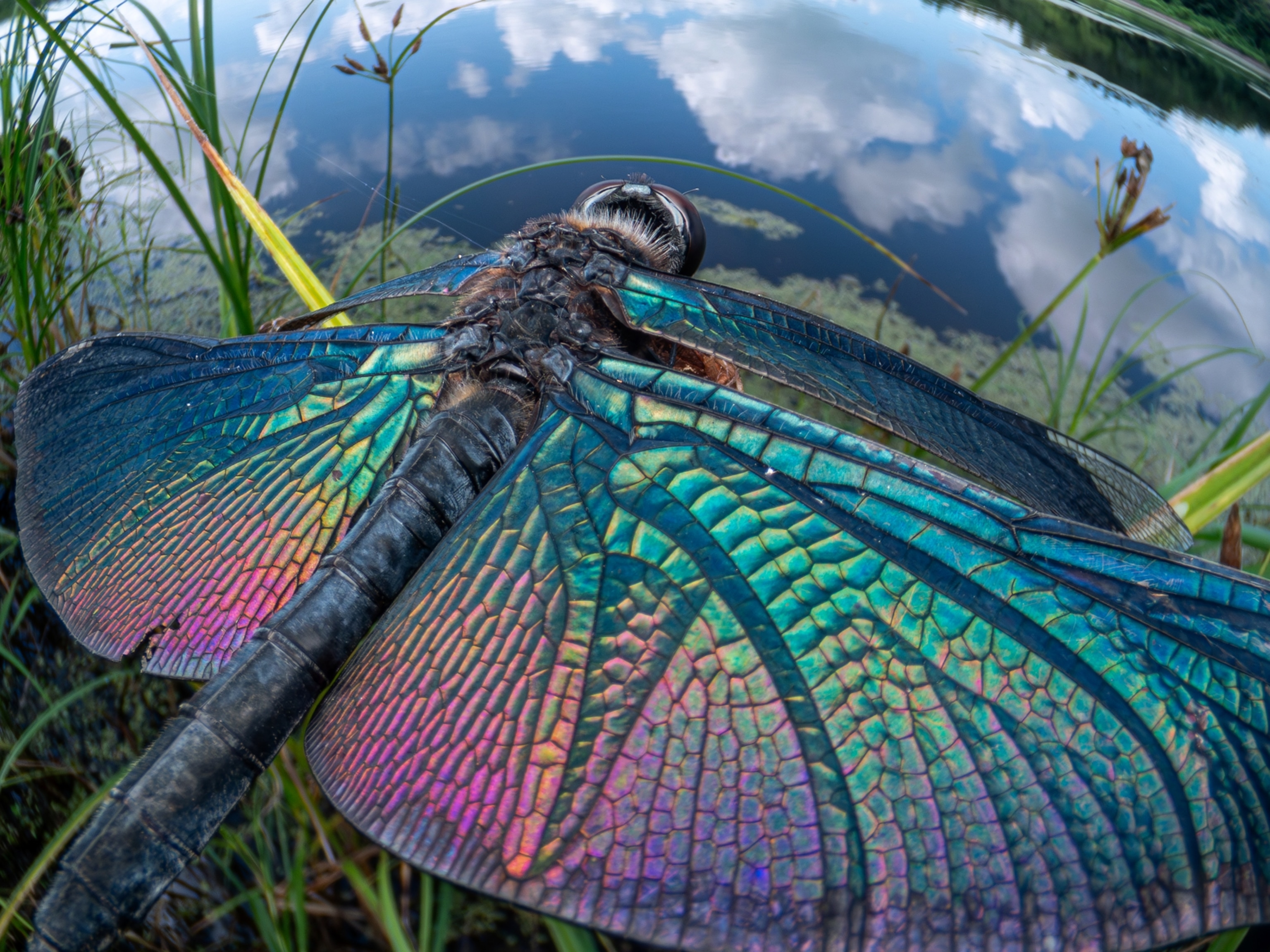
"Zombie" Ants Bite at High Noon, Then Die
Infected bugs are "chimeras: part ant and part fungus," expert says.
A parasitic fungus is turning ants in Thailand into "zombies," and now scientists have a better idea how and when the infection does its gruesome work.
The fungus, a species of Ophiocordyceps, targets carpenter ants living high in Thailand's rain forest canopy. The parasite hijacks the ants' nervous systems, causing the insects to perform abnormal—and oddly specific—behaviors that help the fungus reproduce.
(Related pictures: "'Zombie' Ants Controlled, Decapitated by Flies.")
In a new study, researchers used microscopes to peer inside affected ants and see how the infection progresses. The team found that the growing fungus slowly fills the ant's body and head, causing muscles to waste away and muscle fibers to spread apart.
It takes about three to nine days from initial infection for the ants to become completely zombified, the team found. At first, the infected ants go about their normal business, residing in their nests, interacting with other ants, and even feeding.
"I think of them then as chimeras: part ant and part fungus," said study leader David Hughes, an entomologist at Pennsylvania State University.
"As time goes on, the fungal part increases until that ant's behavior is no longer its own."
The new work also found that the fungus tends to kill its ant hosts at high noon, although the exact reason for this timing remains a mystery.
Zombie Ants Die Locked to Leaves
Scientists have been studying Camponotus leonardi ants in Thailand for several years to assess the insect-fungus interaction. In a 2009 paper, for instance, Hughes and colleagues reported on the surprising specificity of the fungus's "directions" to its zombie hosts.
(Related: "'Zombie Virus' Possible via Rabies-Flu Hybrid?")
While normal ants rarely deviate from a trail along a tree, zombie ants wander aimlessly, and they suffer convulsions that cause the animals to fall out of the forest canopy.
Once on the ground, the ants remain in the leafy understory, which rests about 9 or 10 inches (25 centimeters) above the soil and so is cooler and moister than the forest canopy—perfect conditions for the fungus to reproduce.
After a few days, the fungus directs the insect to clamp down on a leaf. The multiplying fungal cells in the ant's head then cause fibers to detach within the muscles that open and close the ant's mandibles.
This results in "lockjaw," which makes an infected ant unable to release the leaf, even after death, creating a stable place outside the ant for the fungus to grow. At this stage the fungus uses a poison to kill its host.
A few days later, the fungus grows through the top of the dead ant's head as a fruiting body, or stroma. Resembling a buck's antlers, the stroma releases spores to be picked up by another wandering ant.
The entire process, from infection to spore release, takes about two to three weeks, Hughes said. (See step-by-step pictures of the process: "'Zombie' Ants Found With New Mind-Control Fungi.")
But the moment the fungus directs an ant to bite a leaf is at least partly dependent on environmental conditions, Hughes added. If the understory is too dry, the fungus "hangs back and waits."
Most of the fungus-sprouting ants in the 2009 study were found in places with 95 percent humidity and temperatures between 68 and 86 degrees F (20 and 30 degrees C).
Ant Fungus Kills at High Noon
Adding a new twist to the tale, the latest research shows that the fungal coup de grace usually occurs at solar noon, when the sun is at its strongest. The fungus might be using sunlight to synchronize the final part of the infection, but this is still speculation, Hughes said.
The new study also suggests that the fungus doesn't target the ants' brains directly. Rather it secretes compounds that affect the insects' brains and nervous systems.
The compounds "likely have an effect on motor neurons"—responsible for controlling movements—"but that is a hunch at present, based on the type of atrophy we saw," Hughes said in an email.
Ultimately, the researcher hopes his work will lead to practical applications, such as biological insecticides that can target pests. Many species of carpenter ant, for instance, can cause structural damage to buildings as the bugs carve their nests in damp wood.
"It will be a major focus in my group," Hughes said. "How can we use this [discovery] to control ants, which are, after all, devastating pests in many places?"
See pictures of other animal "zombies" >>
The new zombie-ant research is detailed in the May 9 issue of the journal BMC Ecology.





